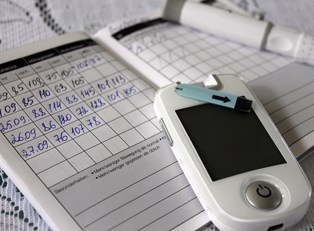Constant thirst and frequent urination are classic symptoms of diabetes insipidus, a rare condition that hinders the kidneys’ ability to retain enough water for the body to function properly. Extreme thirst and excessive urination are also symptoms of diabetes mellitus (sugar-diabetes), but these two conditions are not related even though their names seem similar.
Diabetes insipidus is characterized by the kidneys excessively diluting the urine with water that your body needs to function properly. Diabetes insipidus is rarely a life-threatening disorder, but having this condition does put you at risk for developing dangerous complications, such as dehydration and electrolyte imbalance, if left untreated.
Symptoms
Common symptoms of diabetes insipidus include:
- extreme feeling of thirst
- frequent urination, even during the night
- large volumes of diluted urine
- dehydration
Diabetes insipidus affects both children and adults. The Mayo Clinic suggests that the following symptoms might be seen in infants and young children with diabetes insipidus:
- unusually wet diapers
- dry skin with cool extremities
- unexplained irritability
- fever, vomiting, or diarrhea
- weight loss
- delayed growth
Types of Diabetes Insipidus
There are four main types of diabetes insipidus. Three of the four types directly relate to how your body produces or processes a hormone that is produced and stored in the brain.
Under normal circumstances this hormone, called anti-diuretic hormone (ADH), helps your body regulate fluid and thus prevents dehydration. ADH is produced in the hypothalamus and is stored in the pituitary gland. Another name for ADH is vasopressin.When your body is at risk for dehydration, ADH is released into your bloodstream. ADH signals the kidneys to send more water into your blood. ADH will take the place of the water in your urine, making it concentrated rather than diluted.
Central Diabetes Insipidus
If your body does not produce enough ADH, store, or release it when it should, you may be diagnosed with central diabetes insipidus. Children who are diagnosed with this type are often born with a genetic disorder that causes the condition.
In adults, a shortage of ADH is usually the result of a damaged hypothalamus or pituitary gland. The following are common causes of central diabetes insipidus:
- damage to the hypothalamus or pituitary gland resulting from surgery or inflammation that resulted from brain injury
- a tumor
- infection such as meningitis
Nephrogenic Diabetes Insipidus
This type of diabetes insipidus can be caused by a genetic abnormality that affects the kidneys’ ability to respond to ADH. Nephrogenic diabetes insipidus is not caused by a shortage of ADH. Rather, it is caused by kidney disfunction that may result from the following conditions:
- side effect of taking lithium drugs or certain tetracycline drugs
- inherited kidney disorders
- kidney disease
- hypercalcemia, which is higher than normal calcium levels in the blood
Males are more often affected by genetic factors that cause nephrogenic diabetes insipidus than are females. Females, however, can be carriers of the faulty genes that cause it and pass them down to their children.
Gestational Diabetes Insipidus
This type of diabetes insipidus is a temporary condition that begins and ends with pregnancy. Gestational diabetes insipidus is characterized by a shortage of ADH, but not because of any problem with the hypothalamus or pituitary gland.
In this case, an enzyme that is produced in the placenta, the organ that nourishes the fetus, is the cause. As the mother’s blood circulates through the placenta, this enzyme destroys the ADH, causing an ADH insufficiency.
Primary Polydipsia
This type of diabetes insipidus is unique in that it is not related to ADH at all; it is simply caused by excessive fluid intake. Patients with primary polydipsia are not at risk for dehydration as with the other types of diabetes insipidus.
There are two main causes for primary polydipsia:
- the thirst-regulating component of the hypothalamus has become damaged
- mental illness may cause a feeling of being thirsty in spite of the amount of fluids consumed
Over time, consuming too much fluid can damage the kidneys and even suppress the production of ADH.



